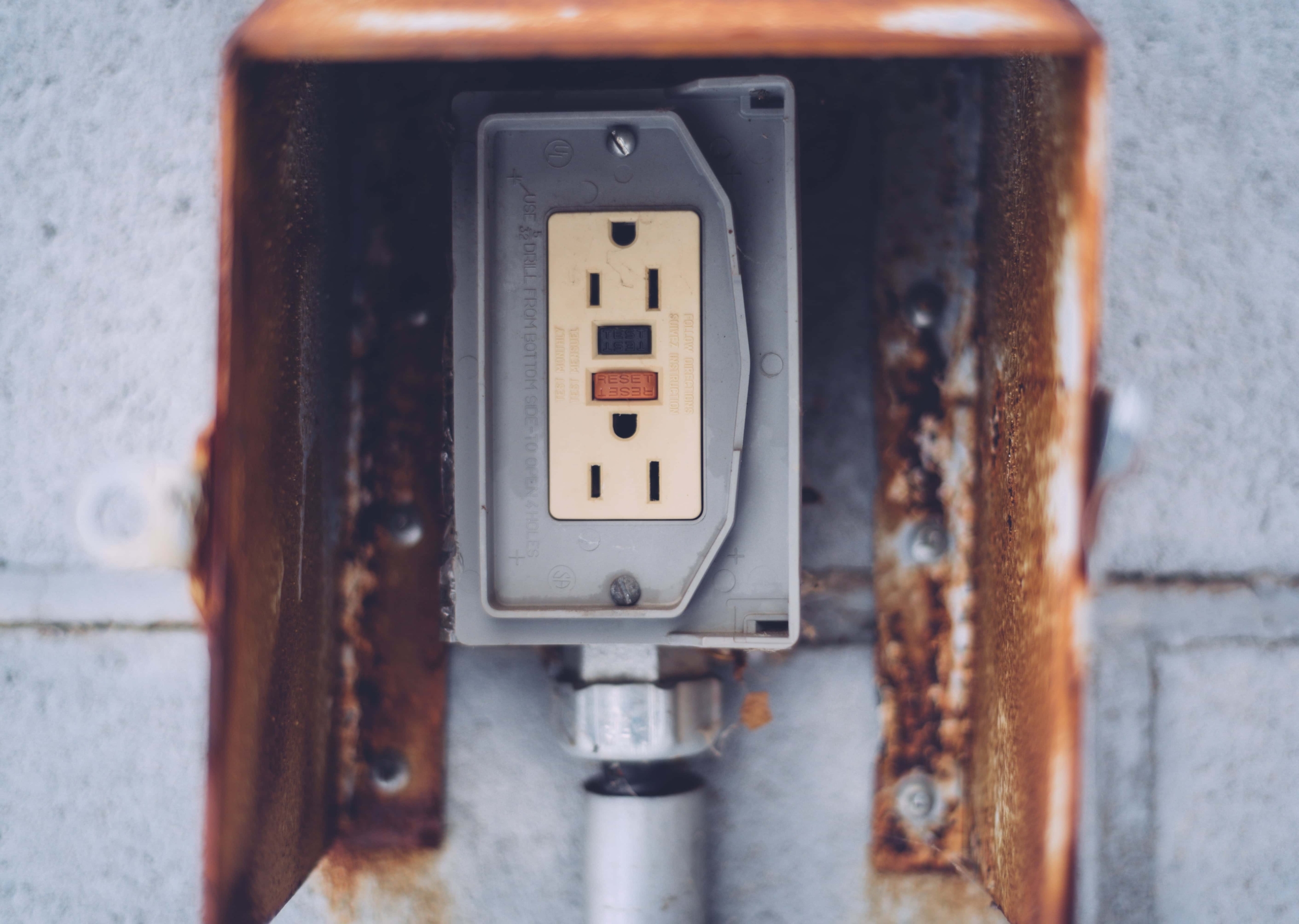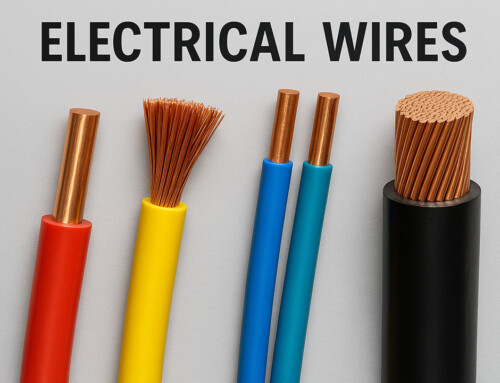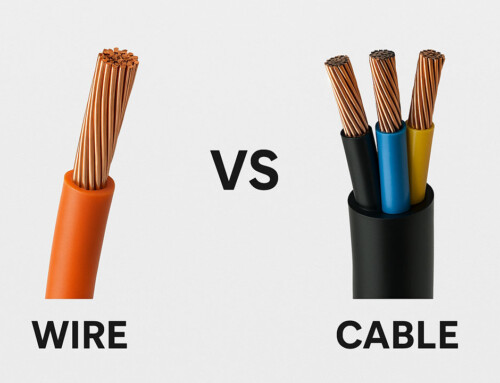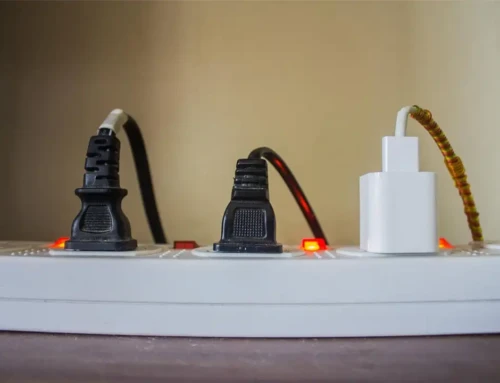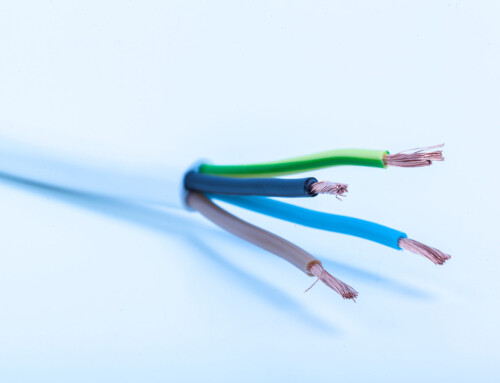Table of Contents
Not every electrical outlet is identical. Whereas the typical household outlet furnishes 120 volts of electricity, suitable for devices like lamps and phones, certain appliances demand a higher voltage. In such instances, opting for a 240-volt outlet is advisable. This specialized outlet is designed to supply a greater voltage, catering to heavy-duty appliances.
The primary distinction lies in both the voltage magnitude (120v vs. 240v) and the configuration of prongs on the plug. This discrepancy in construction and power provision is what sets apart the 240-volt outlet from the standard variant commonly encountered in residences. Keep reading to understand better about a 240-volt outlet.
What is a 240 Volt Outlet?
A standard volt outlet in any household provides 120 volts of electricity. However, a 240-volt outlet provides two 120-volt wires at the same time for running larger appliances like ovens, dryers, air conditioners, and some large power tools that require more power to operate. These outlets look different from regular ones—they are usually larger and have a different shape to fit the special plugs of high-power appliances. Because of the increased power, 240-volt outlets can be more dangerous if not used properly, so it’s important to follow safety guidelines and ensure that appliances and plugs are in good condition.
Installing a 240-volt outlet typically requires a professional electrician, as it involves working with high voltage and ensuring correct and safe wiring.
How Does 240 Volt Outlet Work?
A 240-volt outlet operates by utilizing two 120-volt wires, known as phases, and occasionally a neutral wire. In a standard 120-volt outlet, there is one hot wire and one neutral wire. In contrast, a 240-volt outlet features two hot wires, each supplying 120 volts. When these two hot wires are combined, they produce the 240-volt power required for larger appliances. This setup allows the electricity to flow through both wires, enabling the outlet to provide a higher power output.
Older vs Modern Outlets
The older 240-volt outlets had a 3-prong configuration, including a neutral wire and two hot wires. The neutral wire can sometimes serve as a grounding path, but this setup is less safe compared to modern standards.
The modern 240-volt outlets have a 4-prong configuration, including two hot wires, a neutral wire, and an additional ground wire. The ground wire provides an extra layer of safety by offering a dedicated path for electrical current to follow in case of a fault, reducing the risk of electrical shocks and improving overall safety. This updated design is now required by electrical codes for new installations, providing better protection for users and their appliances.
Differences Between 120V and 240V Outlets
You can easily tell the difference between a 120-volt outlet and a 240-volt outlet with their designs. The 240-volt outlet has a four-prong design, while the 120-volt outlet has a three-prong design. Moreover, the modern-day 240-volt outlets have an L-shaped hole on the top, two vertical side holes, and a half-circle-looking bottom hole, making them appear larger than the 120-volt outlets.
A 240-volt outlet generally measures approximately 4.5 inches in both height and width. Older models featured a three-prong design with a backward “L” shaped slot and two diagonally positioned holes. If you come across these older outlets, upgrading to newer versions is advisable since they adhere to modern safety standards. Various types of 240-volt outlets exist, tailored to specific applications, appliances, and amperage needs. The user manual for your appliance will specify the appropriate outlet type required.
Here’s a table for a better explanation:
| Features | 120 Volt Outlet | 240 Volt Outlet |
|---|---|---|
| Voltage | 120-Volts | 240-Volts |
| Typical Use | For basic residential appliances like TVs, computers, lamps | For high-power residential appliances like water heaters, dryers, ovens, welding machines, and central ACs, along with commercial usage |
| Current Capacity | Will support more appliances on the same circuit | Will support fewer high-power appliances on the same circuit |
| Safety Considerations | Fewer chances of accidents | Increased risk of injuries |
| Wiring | Thin gauge wire | Thick gauge wire |
How to Install a 240V Outlet?
Here’s a step-by-step guide on how to install a 240-volt outlet for your residential usage:
Step 1: Understand the Voltage Requirement
Identify the amperage and voltage needs of the appliance you are installing. There should be a label on the product that indicates the voltage and current specifications, and this information will also be in the product documentation. Buy a 240-volt outlet, circuit breaker, and sheathed cable to meet the appliance’s power requirements from your local hardware store or home center.
Step 2: Install Circuit Breaker
Install the 240-volt circuit breaker in the panel. First, turn off the main breaker. Take off the panel cover and find two adjacent open slots. Snap the new double breaker into these slots. Feed the new sheathed cable into the panel, strip the sheathing, and remove 3/4 inches of insulation from the wires. Connect the ground and neutral wires to their respective bus bars, then attach the two hot wires to the new breaker. Put the panel cover back on. Ensure the new double breaker is off before turning the main breaker back on.
Step 3: Install Receptacle Box
Take the sheathed cable to the location of the appliance for which you need the 240-volt outlet and install the receptacle box there.
Step 4: Prepare the Cable for the Outlet Box
Remove the sheathing from the cable and guide it into the outlet box using the correct bushing or connector. Strip 1/2 inch of insulation from each conductor intended for use.
Step 5: Secure the Ground Connection
Establish the ground connection by inserting the ground wire into the ground lug on the receptacle and securely tightening the screw.
Step 6: Connect the Neutral Wire
Next, connect the neutral wire if the outlet includes one. Note that not every outlet has a neutral terminal. Outlets with three terminals typically do not have a neutral connection.
Step 7: Connect the Hot Wires
Connect the two hot wires by inserting them into the designated hot lugs labeled L1 and L2 and securely tightening the screws. The specific placement of the hot wires in the lugs is not crucial as long as both wires are hot and neither is neutral or ground.
Step 8: Prepare for Testing
Insert the wires into the electrical box, then secure the outlet to the box with screws. Attach the outlet cover and restore power to the outlet to test it.
Step 9: Test the Electrical Outlet
Check the outlet’s functionality with a neon voltage tester. The voltage across the two hot terminals ought to measure 240 volts. Similarly, the voltage between one hot terminal and the neutral terminal (if available) should register 120 volts. Repeat this test between the other hot terminal and the neutral. Lastly, ascertain the voltage between the ground terminal and one of the hot terminals, which should also read 120 volts.
How Do I Know If I Have a 240-volt Outlet?
Spotting a 240-volt outlet within your household is an easy task once you understand the indicators. These outlets are visibly larger than standard ones and often have a unique configuration to accommodate the plugs of heavy-duty appliances.
An easy identifier is the number of prongs: older three-prong outlets consist of two hot wires and a neutral wire, while modern four-prong outlets integrate an additional ground wire for enhanced safety. Examining the appliances connected to the outlet is also helpful; if they are high-power devices such as ovens or dryers, they likely operate on 240 volts. Moreover, a check of your home’s breaker panel can provide confirmation; if the outlet is linked to a double-pole breaker, it signifies a 240-volt system, as these breakers manage the higher voltage by combining two 120-volt lines.
2 Prong Outlet vs 3 Prong Outlet – Know the Difference
How do you know the difference between a 2-prong and a 3-prong outlet? Here’s how you can differentiate between the two:
| Features | Two-Prong Outlet | Three-Prong Outlet |
|---|---|---|
| Prongs | Has two flat metal prongs | Has two flat metal prongs with one grounding prong |
| Grounding Wire | Not available | Has one grounding wire |
| Safety Implications | Depends on the neutral wire to finish the circuit. If an internal appliance malfunctions where a live wire contacts the metal casing, a person touching the casing may receive an electric shock. Without a route for stray currents during a malfunction, the risk of shock is heightened | A grounding wire safely channels stray currents during appliance malfunctions. If a live wire contacts the metal casing, the current goes through the grounding wire to the ground, reducing shock risk and meeting safety standards |
| Typical Use | Found in older buildings and used with some power tools that have double insulation for additional safety | Found in most modern appliances with metal casing |
| Code Compliance | It may not comply with current safety standards, especially for newly constructed buildings. Exercise caution, especially when using appliances with metal housings | Complies with contemporary safety standards. Suitable for the majority of modern appliances |
Safety Considerations for Using 240 Volt Outlets
When dealing with 240-volt outlets, it’s essential to prioritize safety due to the higher voltage involved and the potential dangers associated with improper handling. Here are some critical safety considerations:
- Warning about higher voltage: Unlike standard 120-volt outlets, 240-volt outlets carry double the voltage, which means they can deliver a significantly stronger electrical shock if mishandled. It’s crucial to exercise caution and avoid touching exposed wires or outlets, especially when installing or repairing electrical appliances.
- Importance of using qualified electricians: Given the complexity and potential risks associated with 240-volt outlets, it’s highly recommended to enlist the services of qualified electricians for installation or repair work. Electricians have the expertise and training to ensure that wiring is correctly installed and grounded, reducing the risk of electrical fires, shocks, or appliance damage. Attempting DIY installations or repairs without proper knowledge and experience can pose serious safety hazards and violate building codes.
By recognizing the hazards associated with higher voltage and enlisting professional assistance, you can prioritize safety and minimize the risk of electrical accidents or injuries in your home.
To wrap up, a solid grasp of 240-volt outlets is essential for anyone dealing with modern electrical demands at home. By familiarizing yourself with their installation procedures and safety guidelines, you can ensure your home is well-equipped to handle high-voltage needs. This understanding improves your household’s electrical performance and enhances safety and preparedness for future technological advancements.
FAQs:
-
What is the purpose of a 240-volt outlet?
240-volt outlets provide double the voltage of standard outlets, powering heavy-duty appliances like dryers and ovens. This extra jolt lets them work faster and more efficiently. Some even have a grounding prong for safety.
-
Are 240V outlets safe?
Yes, 240-volt outlets are safe when installed and used correctly. However, following safety guidelines, using proper wiring, and ensuring appliances are compatible with the outlet’s voltage is essential. Additionally, seeking professional assistance from qualified electricians for installation and repairs can enhance safety and prevent potential hazards.
-
How many volts should a 240 outlet have?
A 240-volt outlet should ideally provide a consistent voltage of 240 volts when properly installed and functioning correctly.
-
What can I plug into a 240V outlet?
You can plug larger appliances and equipment that require higher voltage into a 240-volt outlet. This includes appliances like ovens, dryers, air conditioners, and heavy-duty power tools.
-
Will a 120-volt work in a 110 outlet?
Yes, typically, a device designed for 120 volts will work in a 110-volt outlet without any issues. The slight voltage difference is usually within the acceptable range for most electrical devices.

